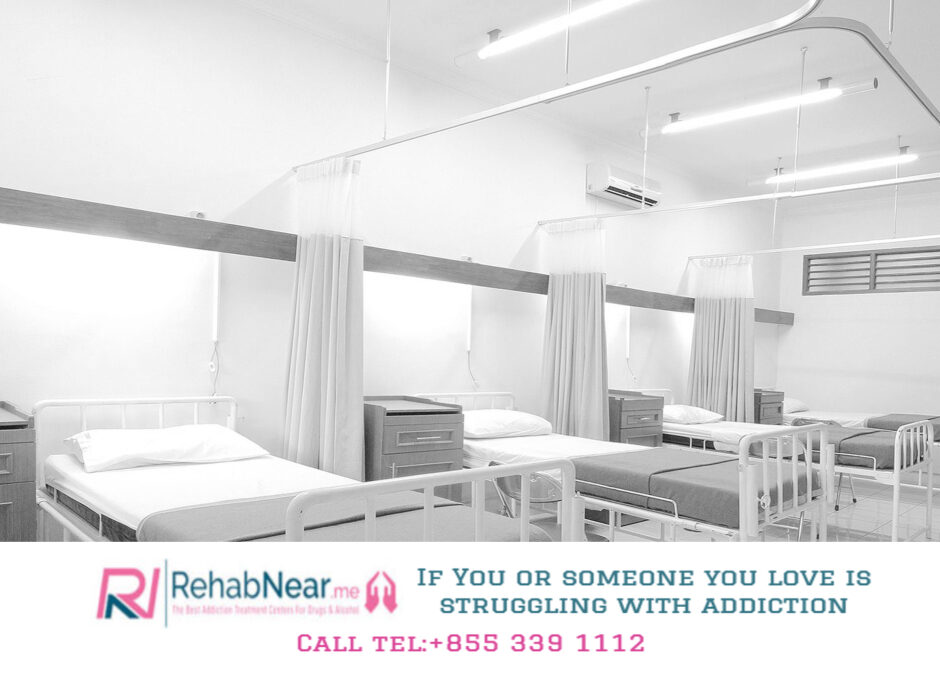Impact of Addiction
855 339 1112
Addiction in Hospital Emergency Rooms
The impact of addiction can be seen in many areas of society, and that includes hospital emergency rooms.
Navigation: Overcrowding and Wait Times, Limited Resources, Importance of Addiction Intervention, Addiction Treatment, Rehab Is Your Best Chance
The impact of addiction can be seen in many areas of society, and that includes hospital emergency rooms. As we all know, hospital emergency rooms play a vital role in addressing addiction-related emergencies and providing initial care for those in crisis due to substance abuse.
Emergency departments cannot ignore addiction. Hospitals are actually responsible legally for providing effective care and assistance to those with a substance use disorder (SUD). [1]
ERs are often the first point of contact for patients experiencing acute intoxication, overdose, or withdrawal symptoms. In these critical moments, medical professionals in the ER assess the patient’s condition, manage immediate health risks, and stabilize them, ensuring their safety and addressing any life-threatening complications associated with substance abuse. This stabilization phase is pivotal in preventing fatal outcomes and providing a starting point for further treatment.
ERs therefore serve as a gateway to addiction treatment by connecting people in need with appropriate resources. Healthcare providers in the emergency room can initiate conversations about addiction, offer brief interventions, and provide information about available treatment options.
They may refer patients to specialized addiction treatment programs, counseling services, or support groups, facilitating the transition from crisis management to ongoing care.
Unfortunately, the rise in drug and alcohol addiction has led to an increase in emergency room visits. This puts a strain on hospital resources and healthcare professionals.
According to the National Institute on Drug Abuse (NIDA), there were over 1.7 million emergency room visits related to drug misuse or abuse in 2017. This number has been steadily increasing over the years, and it is estimated that one in every eight emergency room visits is related to drug or alcohol use.
In 2021, more than 92,000 people in the US died from overdose according to the Centers for Disease Control and Prevention (CDC). This is an increase of almost 30% over the previous 12-month period. [1]
In this article, we will explore the impact of addiction in hospital emergency rooms and the importance of addiction intervention and treatment.
Overcrowding and Wait Times
Overcrowding in emergency rooms remains one of the biggest problems affecting global health in the last decades. Since 1980, it has been considered one of the main factors limiting correct, timely, and efficient hospital care. The COVID-19 pandemic has only accentuated this phenomenon. [2]
The influx of patients with addiction issues has led to overcrowding in hospital emergency rooms. As a result, patients also have to suffer from longer wait times.
This can be especially dangerous for those with life-threatening conditions who need immediate medical attention. In some cases, the longer wait times even increase the risk of violence and aggression towards the healthcare professionals. Patients may become agitated and frustrated while waiting.
This may seem like a simple issue, but it is actually a multifaceted challenge that deeply impacts healthcare systems worldwide. As emergency rooms become overwhelmed, resources are stretched thin and the quality of care also suffers in the process.
Addiction-related emergencies are one of the primary reasons for overcrowding. Substance abuse disorders can lead to various health crises such as overdoses, withdrawal symptoms, or injuries sustained while under the influence. These urgent situations necessitate immediate medical attention, often diverting resources from other critical cases.
There’s also the fact that many addicted individuals tend o seek help in emergency rooms repeatedly instead of going for long-term treatment options. They still face a lot of barriers to treatment such as stigma, lack of resources, or inadequate support systems.
This strain on emergency rooms even highlights some of the systemic issues within the healthcare system. When people don’t have accessible options for ongoing care and support, they resort to emergency rooms for immediate relief, perpetuating the overcrowding cycle.
Addressing this issue requires a holistic approach, involving not only medical intervention but also comprehensive addiction treatment programs, community outreach, and increased mental health support to alleviate the burden on emergency rooms.

Limited Resources
With hospital emergency rooms being overcrowded, it also puts a strain on the already-limited resources that these facilities have.
Hospitals may not always have enough beds or staff to handle the influx of patients. We mentioned how this can lead to longer wait times and decreased quality of care. But this can also result in patients being discharged too soon, without receiving proper treatment for their addiction.
In hospital emergency rooms, the strain of limited resources due to addiction is an ongoing challenge. Substance abuse and addiction place immense pressure on healthcare systems, diverting critical resources away from other patients in need.
One significant impact is the increased demand for immediate medical attention by those who are experiencing drug overdoses or related health crises. This may stretch the ER’s capacity, impacting wait times and the ability to promptly attend to other emergencies, from traumas to acute illnesses.
Addiction is also a chronic and relapsing disorder, so one person may return to the same hospital repeatedly for their condition. What they need is proper, long-term addiction treatment so that they can actually recover. Going to the emergency room is only a band-aid situation if they don’t go to rehab.
This cycle of treatment and relapse not only impedes the ER’s ability to handle new emergencies efficiently, but also poses challenges in providing comprehensive care to other individuals battling addiction. The result is a complex scenario where treating the immediate crisis competes with addressing the underlying issues of addiction.
All of these issues highlight the need for a multifaceted approach in the medical industry. Investment in addiction treatment programs, mental health services, and community-based interventions can alleviate the pressure on emergency rooms.
By bolstering resources outside the ER, such as specialized addiction clinics, outreach programs, and accessible mental health services, we can work towards preventive care and early interventions, ultimately reducing the number of addiction-related emergencies that flood emergency rooms.
Importance of Addiction Intervention
One of the best ways to address the impact of addiction in hospital emergency rooms is through addiction intervention strategies.
This may come in many forms. It can include screening patients for substance abuse and giving them resources for addiction treatment. It can also involve identifying and addressing addiction issues early on. In the long run, this will reduce emergency room visits related to addiction and free up resources for other patients.
Addiction intervention helps break the cycle of substance abuse and compulsive behaviors. It serves as a crucial step towards recovery by addressing the issue directly and motivating the person to seek treatment.
The Johnson Intervention model is typically used in addiction intervention. This model follows the idea that a person must first hit “rock bottom” before they are willing to seek treatment. But a family intervention can create that feeling of hitting rock bottom, sending the message that their condition is harmful and that they need to accept treatment. [3]
Of course, this is not the only model used in addiction intervention. One does not necessarily have to hit rock bottom to accept the idea of treatment. But the idea is to create some sort of positive peer pressure to push a person in the right direction.
No matter what model is used, intervention can help confront people who are in denial. This is a very common problem among those with SUD. Either they are in denial about having the condition or they are in denial about its severity and ability to control their intake. They may not recognize the impact it has on their lives.
Interventions bring together loved ones, friends, and sometimes professionals in a supportive environment to show the person the extent of their addiction and its consequences. This confrontation can be a wake-up call, prompting the person to acknowledge their problem and consider seeking help.
Addiction interventions provide a structured and supportive platform for them to understand that they are not alone. The presence of caring and concerned individuals during an intervention demonstrates solidarity and offers a network of support.
It communicates the message that there are people who genuinely care about their well-being and are willing to support them throughout their recovery journey.
This collective support can be instrumental in motivating the person to accept treatment and start the process of healing.
It can even pave the way for addicted individuals to access professional treatment and support services. An intervention can serve as the bridge between recognizing the problem and taking active steps towards recovery.
In essence, addiction intervention is a powerful and compassionate tool that not only brings awareness to the severity of the issue but also offers a supportive framework crucial for initiating the journey towards recovery. It addresses denial, fosters a supportive environment, and guides people towards seeking the necessary help, ultimately paving the way for a brighter, healthier future.
Addiction Treatment
Once a person accepts that they need proper medical treatment for their addiction, they need to start exploring addiction treatment options.
Remember that there is no one-size-fits all solution when it comes to addiction. The best treatment programs use a personalized approach. After all, addiction affects everyone differently.
In any case, addiction treatment involves programs and modalities that address the symptoms and underlying causes of the disease. It also tackles the consequences that drug abuse has on a person’s life, from their physical and mental health to their social connections and relationships. [4]
With proper addiction treatment, the root cause of the problem is addressed, and it can help free up resources for hospital emergency rooms in the long run. By providing patients with access to treatment programs, they can receive the help they need to overcome their addiction and prevent future emergency room visits.
Addiction treatment options vary based on the type of addiction, its severity, and individual needs. Here are some common ones:
Inpatient Rehabilitation: This involves residing in a treatment center for a specified period, typically 30 to 90 days, providing intensive therapy, counseling, and a controlled environment to focus on recovery.
Outpatient Rehabilitation: Also known as partial hospitalization, it allows patients to live at home while attending scheduled treatment sessions, offering flexibility for those with responsibilities or a strong support system.
Counseling and Therapy: Behavioral therapies, such as cognitive-behavioral therapy (CBT), motivational interviewing, and family therapy, can be conducted individually or in group settings to address underlying issues and triggers for addiction.
Medication-Assisted Treatment (MAT): This approach combines behavioral therapy with medications like methadone, buprenorphine, or naltrexone to manage withdrawal symptoms and cravings, commonly used for opioid or alcohol addiction.
Support Groups: Programs like Alcoholics Anonymous (AA) or Narcotics Anonymous (NA) provide peer support, guidance, and a sense of community for individuals in recovery. It provides emotional support, motivation and accountability from people who understand what the patient is going through.
Dual Diagnosis Treatment: Addresses co-occurring mental health disorders alongside addiction, recognizing and treating both conditions simultaneously.
Holistic Therapies: Yoga, meditation, acupuncture, art therapy, and mindfulness practices can complement traditional treatments, promoting overall well-being and stress reduction.
Aftercare and Continuing Support: Transitioning back to everyday life after treatment is crucial. Follow-up care, ongoing counseling, and support groups help maintain sobriety and prevent relapse.
Choosing the right treatment often involves a personalized approach considering factors like the type of addiction, individual health, support network, and personal preferences. It’s advisable to consult with healthcare professionals or addiction specialists to determine the most suitable treatment plan.
In conclusion, addiction has a significant impact on hospital emergency rooms, leading to overcrowding, longer wait times, and strain on limited resources.
By implementing addiction intervention strategies, providing access to addiction treatment, and promoting community support, we can reduce the impact of addiction in hospital emergency rooms and improve the overall health of our society. Have you or a loved one been affected by addiction in the emergency room? Look for a rehab near you today and get started on the road to recovery.
Rehab is Your Best Chance
Treatment is an addicted individualʼs best option if they want to recover. Beating an addiction not only requires eliminating the physical dependence, but also addressing the behavioral factors that prevent them from wanting to get better. Simply quitting may not change the psychological aspect of addiction. Some people quit for a while, and then take drugs or alcohol again, only to overdose because they did not detox properly. Recovery involves changing the way the patient feels, thinks, and behaves.
Impact of Addiction in Hospital Emergency Rooms https://t.co/verO6RWVxg #rehabnearme 855-339-1112
— RehabNearMe (@RehabNear_Me) December 23, 2023









